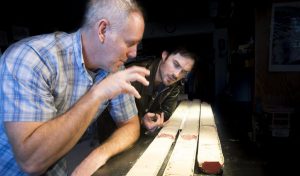Search results for: looking%20for%20cheap%20airline%20tickets%20to%20india%20phone%20number%201-800-299-7264
Conflict Resolution in the Assignment of Area Entitlements for Seabed Mining
Conflict Resolution in the Assignment of Area Entitlements for Seabed Mining Broadus, J.M. and P. Hoagland San Diego Law Review, Vol. 21, No. 3, pp. 541-576, 1984 WHOI-R-84-013
Read MoreSea Grant Two if by Sea Vol. 9 No. 1 A joint n
Sea Grant Two if by Sea Vol. 9 No. 1 A joint n
Read MoreQuestions and Answers on Purchasing Coastal Real Estate In Massachusetts
Questions and Answers on Purchasing Coastal Real Estate In Massachusetts Are you considering buying property near the water? This brochure focuses on questions you should ask (and where to find the answers) as a potential purchaser of coastal real estate. This resource provides information about permitting, erosion and erosion control structures, flood insurance, and much…
Read MoreCytochrome P4501A Induction and Porphyrin Accumulation in PLHC-1 Fish Cells Exposed to Sediment and Oil Shale Extracts
Cytochrome P4501A Induction and Porphyrin Accumulation in PLHC-1 Fish Cells Exposed to Sediment and Oil Shale Extracts Huuskonen, S.E., A. Tuvikene, M. Trapido, K. Fent, and M.E. Hahn Arch. Environ. Contam. Toxicol., Vol. 138, pp. 59-69, 2000 WHOI-R-00-003
Read MoreSediment Cores Hold Clues to Past Climate
June 1 marked the start of the Atlantic hurricane season. After last year’s extremely active and costly hurricane season, many are asking whether ocean warming, sea-level rise, and climate disruption are signaling a new, more intense hurricane regime. Should we in the Northeast do more to prepare for powerful hurricanes? To know what to expect,…
Read MoreMolecular Analysis of a RAPD Marker (B20) Reveals Two Microsatellites and Differential mRNA Expression in Penaeus vannamei
Molecular Analysis of a RAPD Marker (B20) Reveals Two Microsatellites and Differential mRNA Expression in Penaeus vannamei Garcia, D.K., A.K. Dhar, and A. Alcivar-Warren Molecular Marine Biology and Biotechnology, Vol. 5, No. 1, pp. 71-83, 1996 WHOI-R-96-001
Read MoreSediment Cores Hold Clues to Past Hurricanes
Sediment Cores Hold Clues to Past Climate June 1 marked the start of the Atlantic hurricane season. After last year’s extremely active and costly hurricane season, many are asking whether ocean warming, sea-level rise, and climate disruption are signaling a new, more intense hurricane regime. Should we in the Northeast do more to prepare…
Read MoreWHSeaGrant-fisheries2000-2006
WHSeaGrant-fisheries2000-2006
Read MoreAn Ethogram of Body Patterning Behavior in the Biomedically and Commercially Valuable Squid Loligo pealei off Cape Cod, Massachusetts
An Ethogram of Body Patterning Behavior in the Biomedically and Commercially Valuable Squid Loligo pealei off Cape Cod, Massachusetts Hanlon, R.T., M.R. Maxwell, N. Shashar, E.R. Loew, and K.-L. Boyle Biol. Bull., Vol. 197, pp. 49-62, 1999 WHOI-R-99-005
Read MoreTheme Booklet: Environmental Technologies
Theme Booklet: Environmental Technologies WHOI Sea Grant 4 pp., 2000 WHOI-G-00-006 Also available online: click here Learn more of WHOI Sea Grant’s investment in environmental technologies which has resulted in the development of new tools for analyzing and interpreting the effects of toxic chemicals on the reproduction, development, and disease defenses in marine animals and…
Read More
